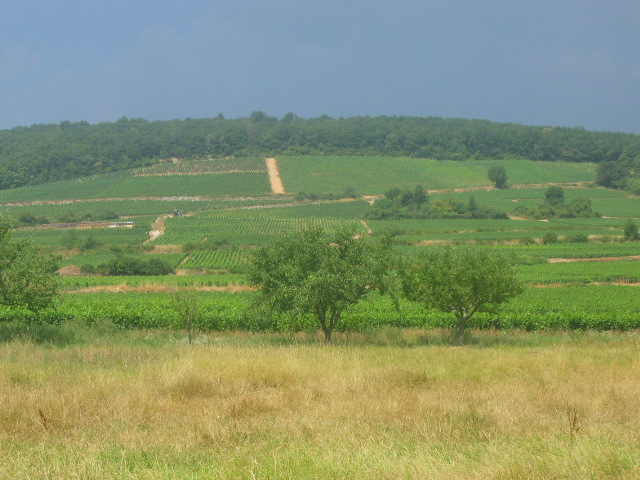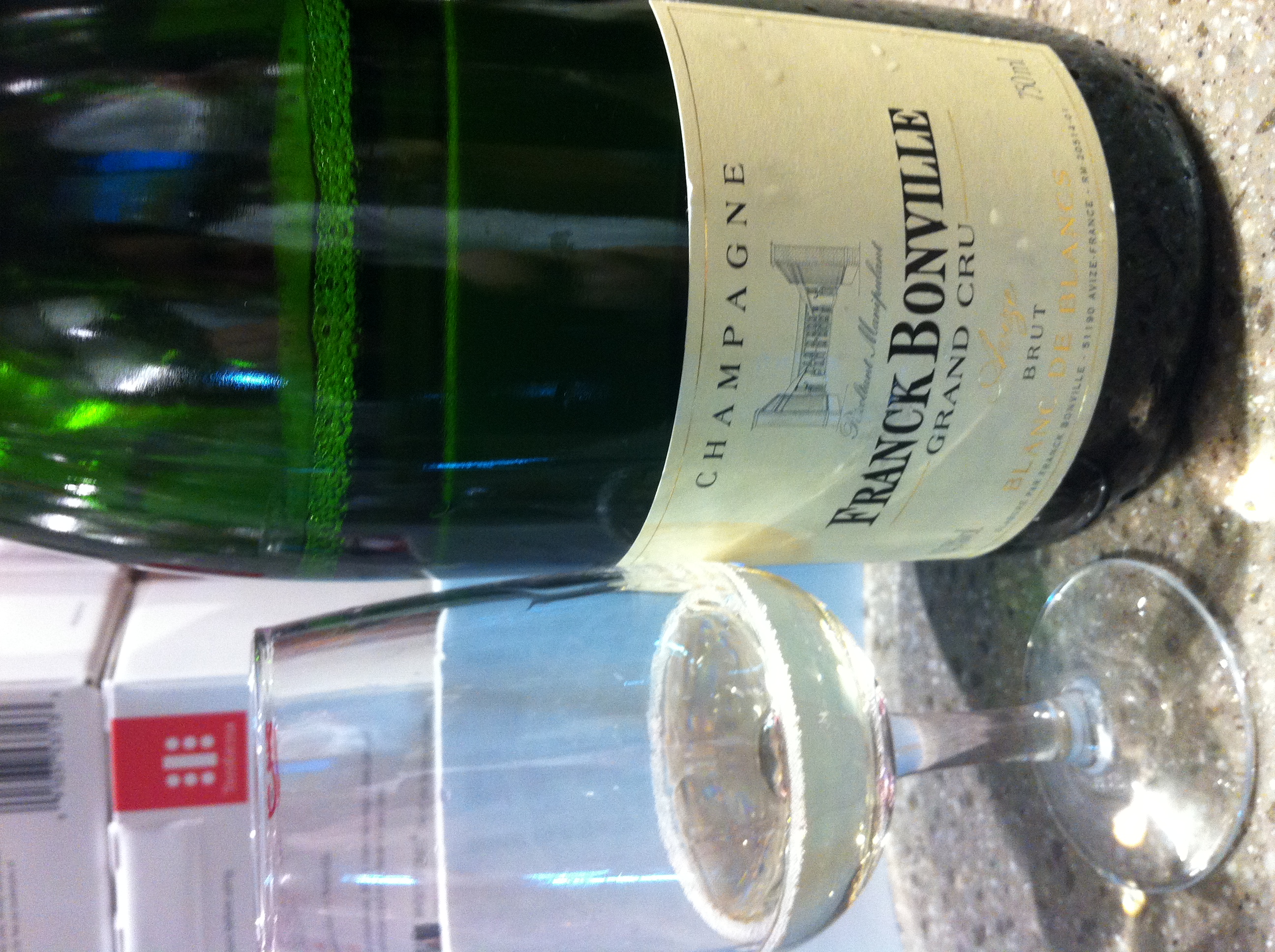|
Hautes-Côtes De Nuits
Hautes-Côtes de Nuits is a subregion of the Burgundy wine region located to the west of the Côte de Nuits subregion. While Côte de Nuits consists of vineyards located on or close to the main Côte d'Or (escarpment), Côte d'Or escarpment, Hautes-Côtes de Nuits covers the area on top of the escarpment, and the adjacent area of various valleys and slopes. Only one ''appellation d'origine contrôlée'' (AOC), Bourgogne Hautes-Côtes de Nuits, covers the entire subregion; there are no specific AOCs named after villages in this subregion, and also no Premier Cru vineyards. This AOC may be used for red and rosé wines with Pinot noir as the main grape variety, as well as white wines with Chardonnay as the main grape variety, and was created in 1961. The AOC covers a number of communes in the Côte-d'Or department: 16 communes situated above the escarpment (the actual Hautes Côtes), and the top parts of four communes that are mainly situated in Côte de Nuits. The border between Haute ... [...More Info...] [...Related Items...] OR: [Wikipedia] [Google] [Baidu] |
Burgundy Wine
Burgundy wine ( or ') is made in the Burgundy region of eastern France, in the valleys and slopes west of the Saône, a tributary of the Rhône. The most famous wines produced here, and those commonly referred to as "Burgundies," are dry red wines made from pinot noir grapes and white wines made from chardonnay grapes. Red and white wines are also made from other grape varieties, such as gamay and aligoté, respectively. Small amounts of rosé and sparkling wines are also produced in the region. Chardonnay-dominated Chablis and gamay-dominated Beaujolais are recognised as part of the Burgundy wine region, but wines from those subregions are usually referred to by their own names rather than as "Burgundy wines". Burgundy has a higher number of ' (AOCs) than any other French region, and is often seen as the most '-conscious of the French wine regions. The various Burgundy AOCs are classified from carefully delineated ' vineyards down to more non-specific regional appellations. ... [...More Info...] [...Related Items...] OR: [Wikipedia] [Google] [Baidu] |
Côte De Nuits
The Côte de Nuits () is a French wine region located in the northern part of the Côte d'Or, the limestone ridge that is at the heart of the Burgundy wine region. It extends from Dijon to just south of Nuits-Saint-Georges, which gives its name to the district and is the regional center. Though some white and rosé wines are produced in the region, the Côte de Nuits is most famous for reds made from pinot noir. The Côte de Nuits covers fourteen communes. Six produce grand cru wines, in the central district between Gevrey-Chambertin and Nuits-Saint-Georges, with four lesser villages either side. The Grand Crus of the Côte de Nuits are some of the smallest appellations in France, less than a hectare in the case of La Romanée.J. Robinson (ed) ''"The Oxford Companion to Wine"'' Third Edition pg 112-150, 206-207, 247-272, 312-313, 429-487, 758-759 Oxford University Press 2006 J. Robinson ''Jancis Robinson's Wine Course'' Third Edition pg 165-168 Abbeville Press 2003 Among the northe ... [...More Info...] [...Related Items...] OR: [Wikipedia] [Google] [Baidu] |
Côte D'Or (escarpment)
The Côte d'Or is a limestone escarpment in Burgundy, France of the same name of the ''department'' which was formed around it. It stretches from Dijon in the north to the river Dheune to the south, overlooking the valley of the Saône to the east. The east-facing slope of the Côte d'Or is home to some of the greatest names of Burgundy wine, such as Gevrey-Chambertin, Clos de Vougeot, Meursault and Montrachet. The northern half, the Côte de Nuits, produces red wine almost exclusively. The Côte de Beaune, around Beaune in the south, produces a mix of white wine and red wine. The Route des Grands Crus (Route Nationale 74) runs along the foot of the ridge and is popular with tourists. Scientists have not yet conclusively determined what factors cause the few small parcels of land on the Côte d'Or to produce superlative wines. Hugh Johnson and Jancis Robinson, ''The World Atlas of Wine 7th ed.'' Octopus Publishing Group, 2013 p. 50. History The area was settled by the Celts, a ... [...More Info...] [...Related Items...] OR: [Wikipedia] [Google] [Baidu] |
Appellation D'origine Contrôlée
An appellation is a legally defined and protected geographical indication primarily used to identify where the grapes for a wine were grown, although other types of food often have appellations as well. Restrictions other than geographical boundaries, such as what grapes may be grown, maximum grape yields, alcohol level, and other quality factors may also apply before an appellation name may legally appear on a wine bottle label. The rules that govern appellations are dependent on the country in which the wine was produced. History The tradition of wine appellation is very old. The oldest references are to be found in the Bible, where ''wine of Samaria'', ''wine of Carmel'', ''wine of Jezreel'', or ''wine of Helbon'' are mentioned. This tradition of appellation continued throughout the Antiquity and the Middle Ages, though without any officially sanctioned rules. Historically, the world's first exclusive (protected) vineyard zone was introduced in Chianti, Italy in 1716 and th ... [...More Info...] [...Related Items...] OR: [Wikipedia] [Google] [Baidu] |
Premier Cru
Cru is a wine term used to indicate a high-quality vineyard or group of vineyards. It is a French word which is traditionally translated as "growth", as is the past participle of the verb "croître" (to grow); it literally means 'grown'. The term is often used within classifications of French wine. By implication, a wine that displays (or is allowed to display) the name of its ''cru'' on its wine label is supposed to exhibit the typical characteristics of this ''cru''. The terms ''Premier Cru'' and ''Grand Cru'' designate levels of presumed quality that are variously defined in different wine regions. Premier cru ''Premier cru'' is a French language wine term corresponding to "first growth" and which can be used to refer to classified vineyards, wineries and wines, with different meanings in different wine regions:J. Robinson (ed.). ''The Oxford Companion to Wine'', Third Edition. p. 544. Oxford University Press, 2006. . * For Bordeaux wine, the term is applied to classified ... [...More Info...] [...Related Items...] OR: [Wikipedia] [Google] [Baidu] |
Pinot Noir
Pinot Noir () is a red-wine grape variety of the species ''Vitis vinifera''. The name may also refer to wines created predominantly from pinot noir grapes. The name is derived from the French language, French words for ''pine'' and ''black.'' The word ''pine'' alludes to the grape variety having tightly clustered, pinecone–shaped bunches of fruit. Pinot Noir grapes are grown around the world, mostly in cooler climates, and the grape is chiefly associated with the Burgundy (wine), Burgundy region of France (wine), France. Pinot Noir is now used to make red wines around the world, as well as champagne, Sparkling wine, sparkling white wines such as the Italian wine, Italian Franciacorta, and Wine from the United Kingdom, English sparkling wines. Regions that have gained a reputation for red pinot noir wines include the Willamette Valley (wine), Willamette Valley of Oregon (wine), Oregon; the Carneros (AVA), Carneros, Central Coast (AVA), Central Coast, Sonoma Coast AVA, Sonoma ... [...More Info...] [...Related Items...] OR: [Wikipedia] [Google] [Baidu] |
Chardonnay
Chardonnay (, , ) is a green-skinned grape variety used in the production of white wine. The variety originated in the Burgundy wine region of eastern French wine, France, but is now grown wherever wine is produced, from English wine, England to New Zealand wine, New Zealand. For new and developing wine regions, growing Chardonnay is seen as a 'rite of passage' and an easy entry into the international wine market. The Chardonnay grape itself is neutral, with many of the flavors commonly associated with the wine being derived from such influences as ''terroir'' and oak (wine), oak.Robinson, 2006, pp. 154–56. It is vinified in many different styles, from the lean, crisply mineral wines of Chablis, France, to New World wines with oak and tropical fruit flavors. In cool climates (such as Chablis and the Carneros AVA of California (wine), California), Chardonnay wine tends to be medium to light body with noticeable acidity (wine), acidity and flavors of green plum, apple, and pe ... [...More Info...] [...Related Items...] OR: [Wikipedia] [Google] [Baidu] |
Côte-d'Or
Côte-d'Or (; literally, "Golden Slope") is a département in the Bourgogne-Franche-Comté region of Northeastern France. In 2019, it had a population of 534,124.Populations légales 2019: 21 Côte-d'Or INSEE Its prefecture is and subprefectures are and |
Hautes-Côtes De Beaune
Hautes-Côtes de Beaune is a subregion of the Burgundy wine region located to the west of the Côte de Beaune subregion. While Côte de Beaune consists of vineyards located on or close to the main Côte d'Or (escarpment), Côte d'Or escarpment, Hautes-Côtes de Beaune covers the area on top of the escarpment, and the adjacent area of various valleys and slopes. Only one ''appellation d'origine contrôlée'' (AOC), Bourgogne Hautes-Côtes de Beaune, covers the entire subregion; there are no specific AOCs named after villages in this subregion, and also no Premier Cru vineyards. This AOC may be used for red and rosé wines with Pinot noir as the main grape variety, as well as white wines with Chardonnay as the main grape variety, and was created in 1961. The AOC extends into two Departments of France, departments: * In the Côte-d'Or department: 12 communes situated above the escarpment (the actual Hautes Côtes), and the top parts of 10 communes that are mainly situated in Côte de ... [...More Info...] [...Related Items...] OR: [Wikipedia] [Google] [Baidu] |
Magny-lès-Villers
Magny-lès-Villers is a commune in the Côte-d'Or department in eastern France. Population See also *Communes of the Côte-d'Or department The following is a list of the 698 Communes of France, communes of the Côte-d'Or Departments of France, department of France. The communes cooperate in the following Communes of France#Intercommunality, intercommunalities (as of 2020): References Communes of Côte-d'Or {{CôteOr-geo-stub ...[...More Info...] [...Related Items...] OR: [Wikipedia] [Google] [Baidu] |
Pinot Blanc
Pinot blanc is a white wine grape. It is a point genetic mutation of Pinot noir. Pinot noir is genetically unstable and will occasionally experience a point mutation in which a vine bears all black fruit except for one cane which produces white fruit. Origins and regional production In Alsace, Germany, Luxembourg, Italy, Hungary, Czech Republic and Slovakia, the wine produced from this grape is a full-bodied white. In Germany, where it is known as Weißer Burgunder or Weißburgunder, there were of Pinot blanc in 2018. The most powerful versions are usually made in Baden and Palatinate. In 2018, there were of Pinot blanc in France, with most of the plantations found in Alsace, where it is used for both still white wines and is the most common variety used for sparkling wine, Crémant d'Alsace. Somewhat confusingly, the designation "Pinot blanc" for Alsace AOC wine does not necessarily mean that the wine is varietally pure Pinot blanc. (This is in difference to Pinot gris, wh ... [...More Info...] [...Related Items...] OR: [Wikipedia] [Google] [Baidu] |






